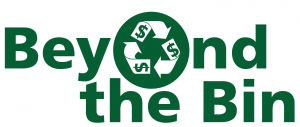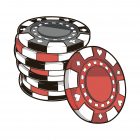Conversations
Business of Recycling: Beyond the Bin - Who benefits from the business of recycling?
March, 2016
 When it comes to the business of recycling, many cities focus their strategies on diverting a high percentage of their waste away from the landfill. One of the ways they do this is by selling their recyclables (usually without a profit) as a way to reduce landfill costs and reinvest in their own programs. Cities such as San Francisco and Portland are widely recognized as the experts in the recycling business, but Edmonton and St. Albert also place high on leading the way in waste management. Like us, most cities (and the businesses that serve them) are finding new markets and uses for waste materials. For some, the dollar is the bottom line—for others, it’s about doing “the right thing.” Regardless of where you fall on that spectrum, it’s clear that recycling is both an environmental effort and a business. What’s unclear, however, is who benefits financially.
When it comes to the business of recycling, many cities focus their strategies on diverting a high percentage of their waste away from the landfill. One of the ways they do this is by selling their recyclables (usually without a profit) as a way to reduce landfill costs and reinvest in their own programs. Cities such as San Francisco and Portland are widely recognized as the experts in the recycling business, but Edmonton and St. Albert also place high on leading the way in waste management. Like us, most cities (and the businesses that serve them) are finding new markets and uses for waste materials. For some, the dollar is the bottom line—for others, it’s about doing “the right thing.” Regardless of where you fall on that spectrum, it’s clear that recycling is both an environmental effort and a business. What’s unclear, however, is who benefits financially.
What Are Recyclables Worth?
Recyclables are commodities that are collected by contractors and sold to brokers. Those brokers then sell the recyclables to manufacturers around the world who use them to create new products. However, because our recycling’s worth is at the mercy of worldwide commodity prices, the recycling business is only a sometimes profitable one. Take e-waste, for example, which can be profitable. The City of St. Albert collects the community’s discarded TVs, computer screens, printers, keyboards and microwaves at its recycling depot and hands them off to a processor, who then recovers valuable components to sell for a profit.
“We collect a lot of e-waste, which funds much of the depot’s operations,” says Christian Benson, St. Albert’s waste programs coordinator. “We get rebates from government and from our processor [Recycle-Logic Inc. in Red Deer]. Not every province does it, but Alberta’s Recycling Management Authority ensures that materials [such as copper, which is sold as a commodity, just like gold or wheat] are harvested in an environmentally and socially responsible way.”
The Edmonton Waste Management -Centre (EWMC) also collects e-waste at its eco–stations, where it separates hazardous mat-erials (such as lead, mercury and cadmium) from useable materials before selling those materials to developing countries, such as China and India. E-waste, however, brings up some important issues and questions for all involved: Is improper disposal of harmful materials happening? What about security concerns around data that may be found on discarded computer hard drives? Though profitable, the ethical issues surrounding e-waste management make it a hot-button recyclable.
EWMC also sells paper, plastics and cardboard (sorted, processed and pressed into large cubes) on the world market. In fact, over three-quarters of what the centre recycles is paper product—everything from cardboard and flyers to newsprint. St. Albert sells traditional recyclables, too—boxboard, cardboard and aluminum—to Allied Paper Savers in Edmonton. “Most of the fibre recyclables aren’t profitable for any municipality, but the money we do raise is returned back into our programs,” says Benson.
Then there’s the business of glass, which continues to be a thorn in the side of recyclers. While bottle deposits provide a financial incentive for consumers to recycle, sorting plants find glass to be a headache—hard to clean and reuse and a hazard to staff and machines when it breaks. The real stopper? You guessed it. Glass isn’t worth much on the market, fluctuating greatly over the decades. “It gets contaminated easily and is heavy,” said Christina Seidel, Executive Director of the Recycling Council of Alberta (RCA). “It can be turned into fibreglass, and there’s a market for that, but glass was 25 years ago what plastic is today—it’s not a significant portion of recycling anymore. But plastic creates a carbon-rich waste that is bought and shredded into flakes or melted into pellets for other companies to turn into new products.”
St. Albert’s Set-up
St. Albert residents have embraced the green organics bin collection (food and garden waste, pizza boxes, etc.) and co-mingled blue bag program (plastic, paper, metal and glass) to such an extent that in its 2014 Environmental Master Plan, St. Albert increased its 2020 target for reducing solid waste generation from a 65% diversion rate to a 75% one—that’s 105 kg or less per person.
That puts St. Albert’s diversion rate at more than double the provincial average, making it one of the leaders in the country. It’s all the more remarkable when considering that Alberta disposed of more municipal waste than any other province just 10 years ago.
“We’ve been aggressive with our programs, but there’s also been a huge shift among residents and council in the last five years. People not only got on board with Pay-As-You-Throw—the only municipality in the region to offer curbside organics recycling and blue bag recycling, they also took greater notice of the city’s recycling depot and special events,” says Benson. “Residents are now asking, ‘What’s next? What’s the long-term plan?’ They want us to continue to find useful means for solid-waste disposal and recycling.”
In 2011, the City expanded the Mike Mitchell Recycling Depot on Chevigny Street, introducing the collection of household hazardous waste (paint and solvents, used oil, tires, car batteries, scrap metal and household cleaning products) to our city. By 2012, the recycling depot and Curbside Blue Bag Program -di-verted 4,932 tonnes of waste.
As well, community programs such as Shred It Day and the annual Take It or Leave It event, where residents can drop off useable large-ticket items—furniture, gym gear, etc.—and take something they may have use for as a free swap. These events have engaged citizens and made recycling a fact of life for many, according to Benson.
As for St. Albert’s landfill, it doesn’t have one. Historically, there was one in the Riel area that’s been long-since capped, followed by two decades of using Edmonton’s 170th Street landfill. Today, garbage is taken to the Roseridge Commission Landfill near Morinville, with organics going to Roseridge Commission’s Organics Composting site. There, the organics are treated and cured to produce high-quality finished compost material that is used in city parks and given out to residents.
Green for Life (GFL) collects St. Albert’s blue bag recyclables, depot items and curbside organics to be sorted, processed, bundled, brokered and sold to manufacturers around the world. As Benson explains, having a reliable waste-collection service at a guaranteed price suits the City’s needs, while GFL assumes the risk or reward on the open market.
“We pay a per-household rate to GFL. For us, it’s not a money-maker. It’s a steady but cost-neutral program, though we get small rebates for paints, tires, batteries, etc.” Benson says.
“Our focus is long-term sustainability at a low cost and landfill diversion. In years to come, we may have access to the EWMC’s biofuel recapture plant—where our garbage can be converted into methanol and ethanol. That’s the way we’re heading.”
Leading the Way
If businesses offer excuses about why they don’t recycle, they won’t get much sympathy from London Drugs. The BC-based retailer is practically a poster child for corporate recycling, leading the way in waste diversion among staff and customers. Chain-wide, London Drugs operates What’s the Green Deal?—an educational in-store and online hub on recycling. The initiative highlights staff and community members who are walking the talk—a notion that London Drugs Edmonton-area Public Relations Manager Natalie Harper says is exactly the point.
“It’s part of doing good business. We are eco- and community-driven, and our organization wants to inspire other retailers. If our programs divert waste from the landfill, it’ll make it easier for others to follow,” says Harper.
The St. Albert store is a jewel in the crown of London Drugs environmental efforts. Several years ago, St. Albert stock handler Linda Helberg took up the cause, getting rid of the receiving-area dumpster and steering the store to a 99% waste diversion rate, the highest across the chain.
“Almost nothing goes in the garbage here. It does take some training and reminder signs around the store, but it becomes a way of life. There’s a station in the photo department for printer ink and cartridges, and another in the pharmacy for unused prescription medicine and bottles,” she says.
The store’s Bring Back the Pack Program allows consumers to return packaging from any product sold in the store, from hard plastic to cardboard, appliances, Christmas lights and Styrofoam.
“We’re one of the only organizations to collect Styrofoam—it’s an expense to send it back to BC, but it’s the right thing to do for our communities,” says Harper, who sends mixed hard and soft plastics, cardboard and medicine containers to Cascade’s Recovery for processing and shipping as commodities for re-manufacture. A new partnership with the makers of Febreze also allows London Drugs to gather hard plastic at an in-store bin—the same goes for Brita water filter cartridges. “We do our homework, choosing recyclers who know what happens to the materials they collect. The recycling bins are just the start of the process for us.”
Alberta’s Recycling Watchdog
The Recycling Council of Alberta (RCA) is a provincial advocacy group—the primary voice for waste reduction in the province. While it reports that Alberta municipalities are doing a good job of diverting waste on the residential side, RCA Executive Director Christina Seidel says when taking commercial and residential data together, diversion rates are just 16% overall.
“That means 70% of solid waste in Alberta goes to the landfill, leaving much room for improvement,” says Seidel. “We largely leave recycling to the private sector. Unfortunately, it’s cheaper for most small and medium-sized businesses to send paper and other recycl-ables to the landfill, rather than pay recycling fees or hire haulers to take it away.”
Since recycling is voluntary, the RCA helps businesses first to reduce the quantity of waste produced and then to divert waste from the landfill. They encourage this with the help of initiatives such as the Packaging and Printed Materials Stewardship Program and the Agricultural Plastics Recycling Program.
“We know the average business doesn’t have the resources or expertise to undertake a recycling program—it needs time, money and effort. Drive the back alleys of your community and you’ll see the cardboard sticking out the dumpsters. It’s a dollars and cents issue,” says Seidel. “That’s where government policy becomes critical to the process. It’s ironic, because Alberta was the first province to have electronics recycling, but we’re now the last province to add to the program. Government hasn’t made recycling a priority—yet.”
Albertans produce more than one tonne of garbage per person each year, the most in the country—and Seidel says that’s a by-product of wealth. “We should see waste as socially unacceptable, but we don’t. Nobody needs a K-cup individual coffee pod. Just sit in a coffee shop and watch—it’s the exception that someone brings in their own mug. Even those sitting in are using disposable cups. We need to have higher expectations of people and businesses—to make it an -embarrassment not to recycle.”
The RCA wants Alberta to join other provinces in enforcing an ‘extended producer responsibility,’ where those who make something are financially responsible for the entire life of the product. Though Alberta has similar programs (for auto tires, electronics, beer containers) Seidel wants to see it happening more broadly, which will help take the recycling cost burden off municipalities.
“There’s money to be made by haulers, processors—anyone in the private sector. But for municipalities and businesses, it’s not an economic plus. People know intuitively that recycling is the right thing to do, with many benefits. But we just don’t value it directly,” she said.
Seidel points to the City of Calgary, which owns its landfill, as progressive in urging businesses to recycle. The city has started charging higher tipping fees for certain materials, sending a price signal to businesses to make changes on what they send to the dump. “They’re the exception at this point,” Seidel says.
No Landfill, No Problem
Edmonton doesn’t have a municipal landfill, but it does have the world-renowned Edmonton Waste Management Centre (EWMC), a site the size of five West Edmonton Malls with 19 advanced waste processing and research facilities in the city’s northeast. Already diverting 50% of the city’s solid waste from landfill, the EWMC has an ambitious goal of reaching 90% in the near future.
While Edmonton doesn’t offer curbside organic pick-up, the EWMC has a massive composter and a new anaerobic one to turn yard waste and other organics into methane. The Waste to Biofuels and Chemicals Facility is the first of its kind to turn household organics into biofuels, helping reduce greenhouse gas emissions (GHG) and helping increase diversion rates from the landfill.
“Some Nordic countries even import garbage for their energy plants—it’s progressive and it’s the way of the future,” says Erika Droessler, education program supervisor for Edmonton’s waste management services.
Other facilities on the site include composting, materials recovery, gas recovery (turning landfill gas into electricity), C & D (construction and demolition) recycling, e-waste and more.
“We consider ourselves leaders, adopting technologies before they become mainstream,” Droessler says.
The players in recycling are many, from environmentalists to money-making businesses. For some, the dollar is the bottom line. For others, costs are simply necessary for insuring a safe, clean and sustainable planet. t8n
Did You Know?
Last year, the City of St. Albert collected 9,000 tonnes of compostable material from its depot and curbside recycling.
Recycling all your home’s waste newsprint, cardboard, glass and metal can reduce carbon dioxide emissions by about 400 kg a year.
What Is Zero Waste?
The Zero Waste International Alliance defines zero waste as a goal to guide people to emulate sustainable, natural cycles, where all discarded materials are resources for others to use. That involves designing and managing products and processes to reduce the volume and toxicity of waste materials, as well as conserving and recovering all resources and not burying or burning them.
Life of a Landfill
Landfills are strictly regulated, costly and cumbersome parts of the
waste cycle. When one is capped and closed, there’s an environmental duty
for the owners and municipalities involved to take on decades (up to 100 years)
of monitoring for GHG emissions and leaching of toxins. St. Albert’s
Christian Benson says “landfills are a lost opportunity for recovery and
generation of energy.”












